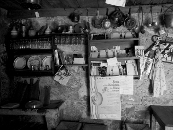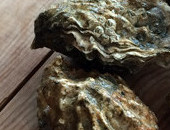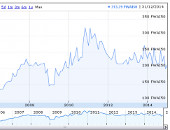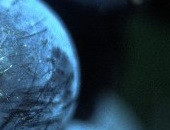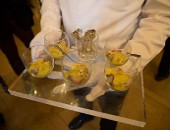WARNING: unbalanced footnote start tag short code found.
If this warning is irrelevant, please disable the syntax validation feature in the dashboard under General settings > Footnote start and end short codes > Check for balanced shortcodes.
Unbalanced start tag short code found before:
“According to the residual quantity of sugar in the bottle (grams/liter), the Champagne is : Doux more than 50 g/l Demi-sec between 32 and 50 g/l Sec between 17 and 32 g/l Extra dry between 12 and 17 g/l Brut less than 12 g/l Extra brut between 0 and 6 g/l For less than 3 g/l and only if no sugar ha…”
See the tasting notes on these Champagnes in Associated Articles at the end of this post. To find a list of all the wines simply click on the words 'zero dosage' and 'extra brut' in the Subjects panel.
There is no doubt that consumer tastes have evolved towards drier styles of all wines, Champagne is no exception. This article concerns the drier styles of Champagne otherwise known as extra brut and brut nature which are determined by the sugar added at the time of disgorgement. Some companies have been making these styles of Champagne for decades (Gimonnet, Larmandier-Bernier, Jacquesson) but the production of these drier styles is still very much in its infancy and although production has doubled in the last 10 years it still barely makes up 1% of total Champagne sales.
If someone took the patchouli out of Chanel's fragrance Coromandel or Givenchy's Gentleman one might think one would notice. In Champagne they've been adding 'dosage' for hundreds of years. So why suddenly start to make Champagne without it?
Champagne can occur in a variety of styles. To be called Champagne the wine must be made according to strict practices. The method is known as the méthode champenoise or 'traditional method'. On a bottle of Champagne one will find the wine's classification according to its dosage : non dosé (no sugar at all), ultra/extra brut, brut (by far the largest category of wines), sec, demi-sec, doux (sweet). The addition of 'dosage' at the time of disgorgement shortly before the bottles are shipped gives rise to a whole schema of classification [ref]According to the residual quantity of sugar in the bottle (grams/liter), the Champagne is :
Doux more than 50 g/l
Demi-sec between 32 and 50 g/l
Sec between 17 and 32 g/l
Extra dry between 12 and 17 g/l
Brut less than 12 g/l
Extra brut between 0 and 6 g/l
For less than 3 g/l and only if no sugar has been added, one can also use the mention « brut
nature », « pas dosé » or « dosage zéro ».
EU regulation states that actual sugar may not differ by more than 3 grams per litre from what appears on the label.
These rules changed according to the UE regulation n° 607/2009 dated July 14, 2009.[/ref] which denotes the wine's residual sugar (in other words, the sugar not transformed into alcohol).
To understand dosage it helps to consider the stages of production involved in making Champagne. Pressing and the first fermentation in stainless steel vats, or wood barrels of varying sizes; blending [ref]assemblage[/ref] the wines in large vats; bottling and the second fermentation in the bottle with an addition of a small amount of sugar, wine and yeast [ref]liqueur de tirage[/ref] to gain the carbon dioxide [ref]prise de mousse [/ref]; ageing on lees which can last for many years depending on the end results. For example, if vintage Champagne is being produced the wine must be aged longer (minimum 3 years) than for non vintage which must age for at least 15 months; riddling [ref]remuage[/ref] - where the bottles are turned (mainly by machine) until they gradually end up on their head despositing the lees from the second fermentation into the neck of the bottle; disgorging [ref]dégorgement[/ref] where the sediment which collects in the neck of the bottle is ejected under pressure - nowadays the neck of the bottle is frozen and the slug ejected whilst a dosage [ref]liqueur d'expedition[/ref] which is a mix of wine and cane sugar is added which gives the Champagne its final character and style - this is where the volume of sugar added will determine whether the wine is zero-dosage, extra-brut, brut, and so forth. The dosage: each Champagne house may have its own specially concocted recipe for this element and the importance of its full assimilation into the wine is paramount which is why most producers control the shipping of their wines so that there might be a minimum of 6 months following this process before the Champagne is drunk. The character of each cuvée should determine the content of the dosage which is necessary to complete the vinification and round off the wine. However, when wines are very well balanced a lower volume of sugar (or none at all) might be prescribed. Then there is the final corking and shaking [ref]poignettage[/ref] of the bottle to integrate the dosage and finally, labelling.
Conclusions
It is no coincidence that the quality of wines tasted for this article is so high - see the tasting notes. Only a brave, or foolhardy producer would expose their wines to the transparency which lower dosage brings to the wine since a higher dosage can also be used to hide its defects. Given this ingenuousness the selection of grape varieties, the blend and character of the vintage show through. It is the purity of these wines which is their strength and the noticeable characteristics are their finesse, elegance, refinement, freshness, and apparent acidity. The wines are ideal as an aperitif. Whilst Champagne with a lower dosage produces a wine which is drier and less sweet, the true objective is to give a clearer expression of the terroir. The tautology inherent in the title of this article serves to emphasise the distinction which this category of Champagne (dosage less than 6g/litre) holds in the gamut of Champagne styles.
The top wines from our tastings demonstrated the art of making great Champagne and the way in which a light touch with the dosage can truly reveal the wonderful character of the domains and their precision wine-making. These included Larmandier-Bernier Grand Cru blanc de blancs 2005 - "simply stunning"; Larmandier-Bernier Terre de Vertus 2007 - "exceptional structure coupled with a sense that the integrity and purity of the wine is maintained"; Jacquesson Champagne Cuvee 735 brut - "layers of depth"; Philipponat Royal Reserve Non dose NV - "something to write home about"; Jacquesson Champ Caïn ('2002') - "very elegant"; Gimonnet Oenophile 2005 - "a classic among Champagnes".
There is no doubt that consumer tastes have evolved towards drier styles of all wines, Champagne is no exception. This article concerns the drier styles of Champagne otherwise known as extra brut and brut nature which are determined by the sugar added at the time of disgorgement. Some companies have been making these styles of Champagne for decades (Gimonnet, Larmandier-Bernier, Jacquesson) but the production of these drier styles is still very much in its infancy and although production has doubled in the last 10 years it still barely makes up 1% of total Champagne sales.
If someone took the patchouli out of Chanel's fragrance Coromandel or Givenchy's Gentleman one might think one would notice. In Champagne they've been adding 'dosage' for hundreds of years. So why suddenly start to make Champagne without it?
Champagne can occur in a variety of styles. To be called Champagne the wine must be made according to strict practices. The method is known as the méthode champenoise or 'traditional method'. On a bottle of Champagne one will find the wine's classification according to its dosage : non dosé (no sugar at all), ultra/extra brut, brut (by far the largest category of wines), sec, demi-sec, doux (sweet). The addition of 'dosage' at the time of disgorgement shortly before the bottles are shipped gives rise to a whole schema of classification [ref]According to the residual quantity of sugar in the bottle (grams/liter), the Champagne is :
Doux more than 50 g/l
Demi-sec between 32 and 50 g/l
Sec between 17 and 32 g/l
Extra dry between 12 and 17 g/l
Brut less than 12 g/l
Extra brut between 0 and 6 g/l
For less than 3 g/l and only if no sugar has been added, one can also use the mention « brut
nature », « pas dosé » or « dosage zéro ».
.../continued...you need to upgrade your subscription if you wish to read this content.
There is no doubt that consumer tastes have evolved towards drier styles of all wines, Champagne is no exception. This article concerns the drier styles of Champagne otherwise known as extra brut and brut nature which are determined by the sugar added at the time of disgorgement. Some companies have been making these styles of Champagne for decades (Gimonnet, Larmandier-Bernier, Jacquesson) but the production of these drier styles is still very much in its infancy and although production has doubled in the last 10 years it still barely makes up 1% of total Champagne sales.
If someone took the patchouli out of Chanel's fragrance Coromandel or Givenchy's Gentleman one might think one would notice. In Champagne they've been adding 'dosage' for hundreds of years. So why suddenly start to make Champagne without it?
Champagne can occur in a variety of styles. To be called Champagne the wine must be made according to strict practices. The method is known as the méthode champenoise or 'traditional method'. On a bottle of Champagne one will find the wine's classification according to its dosage : non dosé (no sugar at all), ultra/extra brut, brut (by far the largest category of wines), sec, demi-sec, doux (sweet). The addition of 'dosage' at the time of disgorgement shortly before the bottles are shipped gives rise to a whole schema of classification [ref]According to the residual quantity of sugar in the bottle (grams/liter), the Champagne is :
Doux more than 50 g/l
Demi-sec between 32 and 50 g/l
Sec between 17 and 32 g/l
Extra dry between 12 and 17 g/l
Brut less than 12 g/l
Extra brut between 0 and 6 g/l
For less than 3 g/l and only if no sugar has been added, one can also use the mention « brut
nature », « pas dosé » or « dosage zéro ».
.../continued...you need to subscribe to be able to view content from Fine Wine magazine.
Subscribe HERE to Fine Wine magazine to read the rest of this content or log yourself in if you are already a member.

